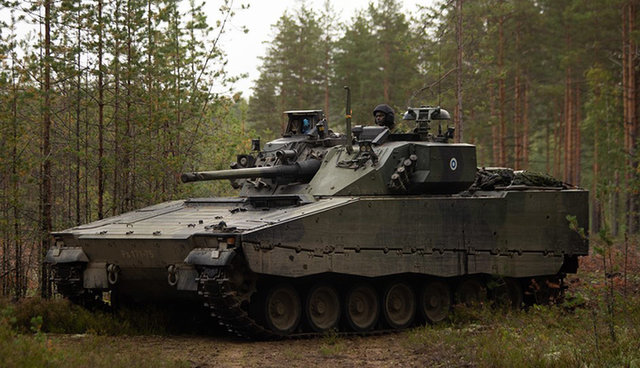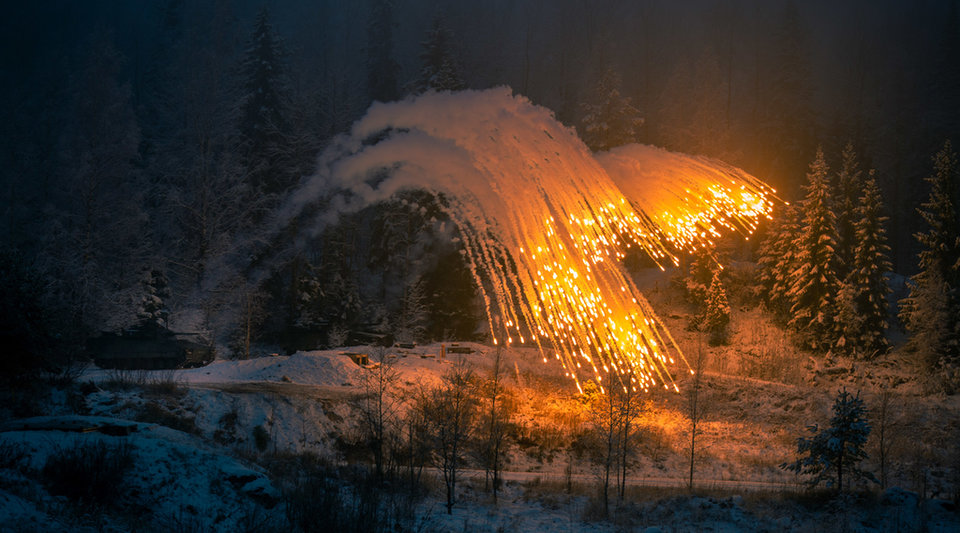Vehicles
Finland upgrades CV90 fleet extending capabilities into the 2030s
The Finnish Ministry of Defence is the latest in a series of CV90 customers to re-invest in the infantry fighting vehicle platform. Norbert Neumann looks into the country's technological modernisation efforts and the project's tactical importance.
In July 2021, BAE Systems Hägglunds signed a $32m contract to upgrade the Finnish Army’s fleet of CV90 infantry fighting vehicles (IFV). The agreement includes a mid-life extension (MLE) to improve the vehicle’s combat efficiency for the future battlefield into the 2030s.
The CV9030FIN prototype and test series vehicles will receive the first upgrades, with the remaining lifecycle upgrades to take place between 2022 and 2026. The planning and development work will be done in Sweden, and the pre-production series and serial work in Finland.
The Finnish Ministry of Defence's head of communications Kristian Vakkuritells Global Defence Technology: “The project will secure the capability of the vehicles to the 2030s. At the same time, it will make it possible to eventually have a more extensive mid-life upgrade performed on the vehicles during the latter part of their life cycle.
"The CV90 fleet is an important capability that is mainly used to support mechanised infantry.”
Inspector of the CV90 infantry Colonel Rainer Peltoniemi says: “It is crucial that Finland possesses and acquires maintenance capability and know-how required for emergency conditions through subcontracting cooperation, and strengthens them further. From the perspective of readiness as well it is important that the vehicles stay in Finland while the upgrade work is going on.”

// The CV9030FIN prototype and test series vehicles will receive the first upgrades. Credit: BAE Systems Hägglunds
Weapons systems
Of the existing 15 variants, the Finnish Defence Forces only uses the CV90 IFV variant. According to BAE Systems, the 20- to 35-ton model offers agility and powerful combat capabilities and integrates a wide range of weapon systems.
Earlier this year, CV90 upgrades saw the integration and test firing of an anti-tank guided missile using Rafael’s advanced defence system SPIKE-LR for the first time. The intention was to diversify the CV90’s operational capabilities, increase lethality and improve crew safety by enabling indirect fire at long distances or air targets.
”The current project will be focusing mainly on life span extension. The purpose of the MLE is to improve the general availability and maintainability of the vehicle, develop in-service safety and upgrade the system software,” Vakkuri says.
The CV90 capabilities are considered to be a strategic asset for the defence of Finland.
Although Finland is not a NATO member, it shares common values with the alliance and regularly conducts open political dialogue and engages in a wide range of practical cooperation activities, peace support operations and joint exercises. Both agree on the importance of ensuring interoperable capabilities and Finland maintaining close ties with NATO and other partners.
BAE Systems’ Land Systems Hägglunds subsidiary spokesperson Ola Thorén tells us: “The CV90 capabilities are considered to be a strategic asset for the defence of Finland, like other armies. The upgrades of the Finnish CV90s will strengthen the Finnish Army well into the future to continue to provide a threshold for any adversary.”
Originally, the chassis of CV90 was built by BAE Systems Land Systems Hägglunds and Saab Bofors supplied the turret. Currently, BAE Systems Hägglunds produces the entire vehicle. All CV90 variants carry a crew of three: commander, driver and gunner, together with up to eight soldiers.

// Simon Galt is Aurora managing director at QinetiQ about what this means for accelerating defence innovation. Credit: QinetiQ

// The CV90 IFV variant integrates a wide range of weapon systems. Credit: BAE Systems Hägglunds
Onboard vehicle information
Vehicle information is displayed on an onboard vehicle information system. The CV90 boasts a low radar, acoustic and infrared signature which makes it relatively stealthy for its size.
The vehicle offers fire detection and extinguishing systems and full nuclear, biological, and chemical protection. It can be fitted with uncrewed or two-person crewed turrets which are equipped with the well-proven 30-35mm Bushmaster cannon product range.
Thorén says: “The CV90 is originally designed for the harsh Nordic conditions, including the ability to negotiate the very difficult terrain.”
However, the vehicle was successfully used in even the desert conditions of Liberia and Afghanistan.
Thorén emphasises that the Finnish Army has extensive experience in operating the CV90s and has concluded that the vehicle delivers the required capabilities.
BAE Systems says the CV90 offers advanced survivability systems without compromising mobility. The platform is fitted with active damping that reduces the vehicle’s pitch acceleration. This allows for increased target-finding ability and hit probability while performing agile sprints.
BAE Systems has not disclosed whether the advanced modular armour protection or other survivability systems will receive any improvements during the upgrading projects, but Thorén says: “The CV90's sensor capabilities will receive enhancement and the electronic architecture will be modernised as well.”
Finland is one of seven countries that operate CV90 IFVs along with Sweden, Norway, Switzerland, Estonia, The Netherlands and Denmark.
// Main image: BAE Systems Hägglunds has signed a $32m contract to upgrade the Finnish Army’s fleet of CV90 infantry fighting vehicles. Credit: BAE Systems Hägglunds